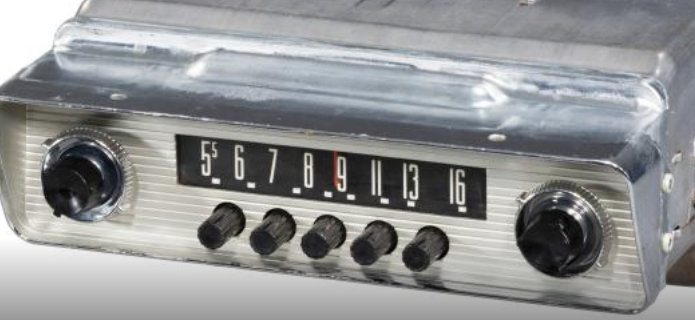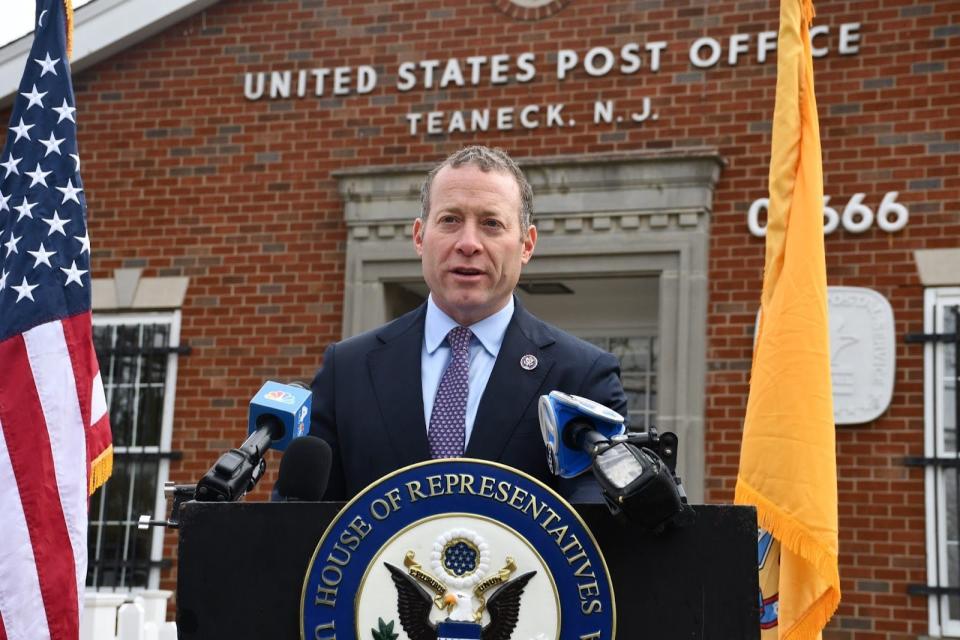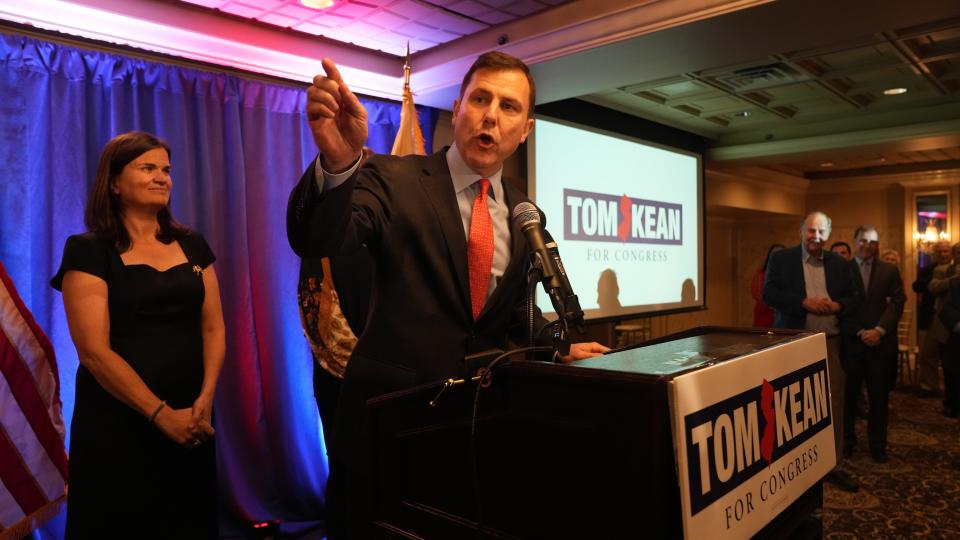No more AM radio for cars? Not so fast, say NJ lawmakers
"Don't touch that dial!"
That's what radio announcers said, back in the day. And that's what some legislators are saying now — with AM radio seemingly under threat from the auto industry.
BMW, Tesla, Audi, Porsche and Volvo have removed AM radio from their electric vehicles. Ford has threatened to do the same for its electric pickup truck, the F-150 Lightning. Such developments prompted a bipartisan group of lawmakers to introduce the AM for Every Vehicle Act in both the House and Senate on Wednesday.
Automakers would be required by the the National Highway Traffic Safety Administration to install AM radios in their vehicles at no additional cost to the consumer, according to the provisions of the bill.
"AM radio is the backbone behind America's national public warning system," said U.S. Congressman Josh Gottheimer, D-Wyckoff, who spearheaded the proposed legislation.
Depending on AM

"AM radio is resilient to cyber attacks, nuclear threat, and natural disasters," Gottheimer said at a press conference Thursday. "Because when the cellphone goes out, the internet gets cut off, or the television doesn't work because there's no power to your house, you can still use AM radio. It will still be there."
At issue are automaker claims that AM reception — which can sometimes be staticky, as all listeners know — is subject to exceptional interference in their new electric cars. The same AM content, they say, could be accessed through apps and streaming. AM is an old platform, they say. Outmoded.
But Honda, Toyota and Nissan still have AM in their electric cars, the pro-AM bloc has responded. They seem to have figured it out. Why can't Tesla?
"If Elon Musk has enough money to buy Twitter, and send rockets to space, he can certainly afford to include AM radio in his Teslas," Gottheimer said.
Cars are the key

But the issue, potentially, is bigger than just car radios.
A full 40% of radio listening is done is cars, according to Forbes magazine. If Detroit decrees that cars will no longer have AM, it is doubtful how long the platform itself could stay commercially viable.
"We need to go back to Detroit and find a way to sit down with them and make them understand that this is not the equivalent of the 8-track," said Tim Scheld of Montvale, WCBS AM's news director from 2003 to 2022.
"The stations in little places all across America are a lifeline," he said.
Other New Jersey sponsors of the AM for Every Vehicle Act include Republican representative Thomas Kean Jr. and Democratic representative Robert Menendez. Nationally, supporters range on both sides of the aisle — from Democrat Ed Markey of Massachusetts to Texas Republican senator Ted Cruz.
The rare bipartisan accord over AM speaks to the universality of the 103-year-old medium. Everyone, it seems, has a dog in this fight.
Many of the right-leaning talk shows that are key to the Republican base live on AM. Sean Hannity, among others, has suggested that the phasing out of AM could be a conspiracy to silence conservative voices.
"Due to the nature of the sound, AM lends itself to the spoken word, which is why the talk shows gravitate toward it," said Jordan Walton, executive director of New Jersey Broadcasters Association, representing most of the 80 stations in the state — including 39 AM stations. "We wholeheartedly support the bill," he said.
On the blue end of the spectrum, AM also is the platform for hundreds of foreign-language stations that serve marginalized communities. Some 47 million Americans listen to AM, Gottheimer said — not least to 700 Spanish-language stations.
Available to all
As a platform, AM is comparatively cheap. It is also democratic. No subscriptions, no 21st century tech skills required. Anyone, from a millionaire in a Porsche to a homeless person with a battery radio, can tune in. Farmers in the Midwest rely on it. So do seniors. So do immigrants.
"There are 13 non-English language stations in the state, including Spanish, Portuguese, and two Southeast Asian," Walton said. "All of them are AM."

But the urgency of the AM for Every Vehicle Act has more to do with another aspect of AM: its usefulness in a crisis.
"AM radio brings a lifeline for those who rely on the news, sports talk shows, and emergency communications, from severe weather warnings to amber alerts, " Rep. Kean said Thursday.
FEMA, Walton notes, has invested many decades building up its Integrated Public Alert & Warning System (IPAWS) "There are something like 77 primary emergency alerting stations around the country," he said. "The vast majority are AM stations."
But along with government bulletins, AM also brings localized coverage, from small regional stations, that would disappear if AM was to vanish from the airwaves. New Jerseyans, who have been through their fair share of crises — 9/11, Superstorm Sandy — know how this matters.
In 2012, when Sandy turned the state upside-down, the local station was a godsend, said WCBS AM radio reporter Wayne Cabot.

"We have a local station in Hackettstown," Cabot said. "When Sandy hit and you couldn't find gas, they would be taking calls from listeners. 'The Sunoco on Route 31, they just have Premium now, but they told me a supply of Regular is on its way in two hours.' That's great information. Essential information. And that's what local news can deliver. Where the food is. Who has meals. When the power company says the lights are coming back on."
And AM can be relied on when the internet goes down, when cellphone service fails, when the power goes out — which, during severe weather or other emergency, it can and does. Battery radios, hand-cranked emergency sets can be a lifeline. In a pinch, you can make an AM receiver with a toilet-paper tube and some copper wire.
Or, you can simply go to the garage, and listen to the AM radio in the car.
But first, your car needs to have one.
"If we are serious about making the EV a realistic option for all Americans, we need to ensure that these vehicles have basic features that are still used by many to receive updates, and news," Menendez said Thursday. "AM radio is a reliable source for emergency updates for many residents of our district."
This article originally appeared on NorthJersey.com: AM radio going away? NJ bill aims to keep stations in cars

